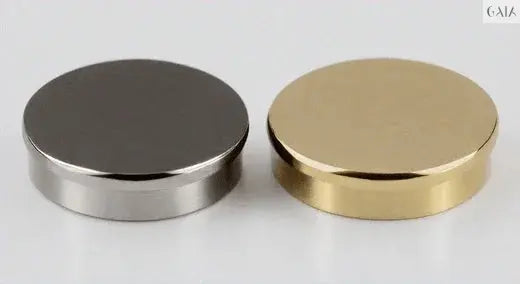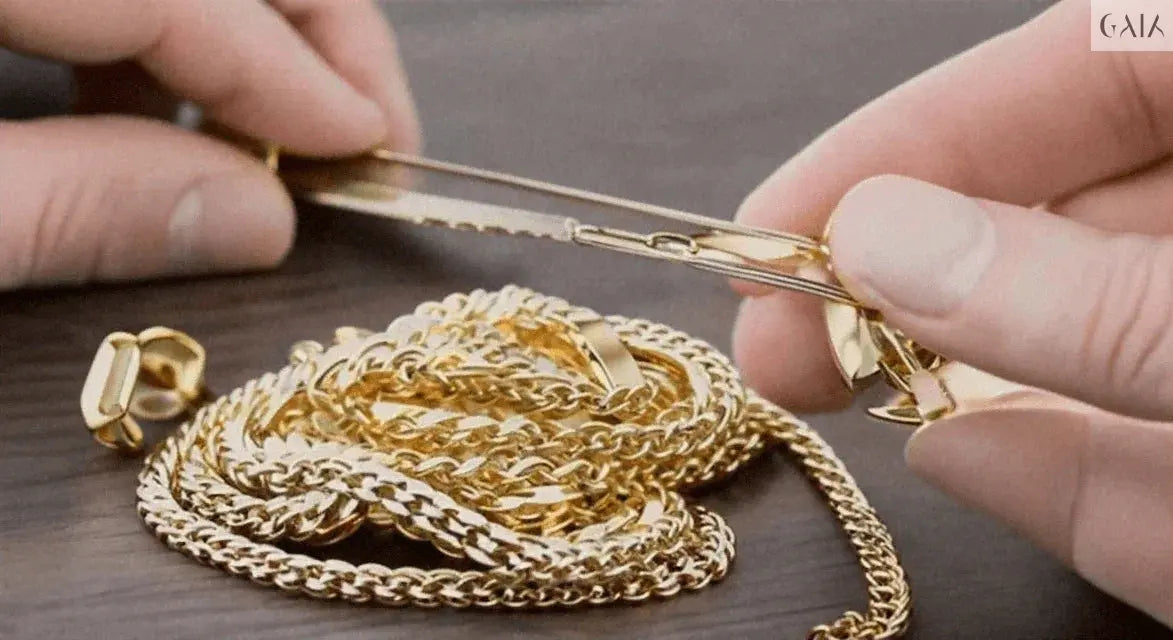
Gold Plated: Stainless Steel vs. Brass vs. Silver - Which Lasts Longest?
Gold-plated jewelry and accessories are a popular choice for adding a luxurious touch to any outfit. However, not all gold-plated items offer the same level of quality and durability. The type of base metal used beneath the gold layer plays a crucial role in how well the piece will hold up over time. In this article, we’ll explore the durability of three common base metals used in gold plating: stainless steel, brass, and real silver, highlighting their unique properties and how they compare in terms of longevity and wear
The Durability Showdown: Gold Plated Metals
When it comes to jewelry and other accessories, gold plating adds a touch of luxury and elegance. But not all gold-plated materials are created equal. The base metal beneath the gold layer significantly impacts the longevity and durability of the plating. Let's delve into the world of gold plating and see how stainless steel, brass, and real silver stack up against each other.
Stainless Steel: The Sturdy Contender
Stainless steel is a popular choice for gold plating due to its inherent strength and resistance to corrosion. Here's why it's a strong contender:
- Durability: Stainless steel is tough and can withstand everyday wear and tear. It's less prone to scratches and dents compared to softer metals like brass or silver.
- Corrosion Resistance: Stainless steel's composition makes it highly resistant to rust and tarnishing, extending the life of the gold plating.
- Hypoallergenic: Stainless steel is generally hypoallergenic, making it a good choice for people with sensitive skin.
However, it's worth noting that while stainless steel is durable, the gold plating can still wear away over time, especially with frequent contact or harsh chemicals.
Brass: The Affordable Option
Brass is a less expensive option than stainless steel, often used for gold-plated jewelry. However, its durability and longevity aren't as impressive:
- Lower Durability: Brass is softer than stainless steel, making it more susceptible to scratches, dents, and even bending.
- Tarnishing: Brass can tarnish over time, especially when exposed to air and moisture. The tarnishing can affect the appearance of the gold plating.
Brass gold plating tends to wear away faster than stainless steel plating, especially with regular use. You might notice the base brass color peeking through sooner.
Silver: The Elegant but Delicate Choice
Real silver is known for its lustrous beauty, but it's also quite soft and prone to tarnishing. This makes it less ideal for gold plating in terms of durability:
- Softness: Silver is easily scratched and dented, making it more susceptible to damage than stainless steel or brass.
- Tarnishing: Silver tarnishes quickly when exposed to air and moisture, creating a dull, dark coating. This tarnishing can also affect the appearance of the gold plating.
While silver is an elegant choice, its softness and tarnishing make it less suitable for everyday wear and tear, especially if you want the gold plating to last long.
The Verdict: Choosing the Best Option
Here's a breakdown of which gold-plated metal reigns supreme in terms of longevity:
- Longest Lasting: Stainless steel gold plating generally lasts the longest due to its durability and resistance to corrosion.
- Mid-Range Durability: Brass gold plating offers a balance between affordability and longevity. While not as durable as stainless steel, it's still a viable option.
- Shortest Lasting: Real silver gold plating, though elegant, is the least durable and prone to tarnishing, leading to faster wear and tear on the gold plating.
Ultimately, the best choice depends on your individual needs and preferences. Consider the intended use, your budget, and the desired level of durability when making your decision. For long-lasting gold plating that stands the test of time, stainless steel is often the top contender.
Tips for Extending the Life of Gold Plating
No matter which base metal you choose, you can take steps to prolong the life of your gold plating:
- Store Properly: Store your gold-plated items in a dry, airtight container to prevent tarnishing and moisture damage.
- Avoid Harsh Chemicals: Limit exposure to cleaning agents, perfumes, and lotions that can strip the gold plating.
- Clean Regularly: Use a soft cloth or jewelry cleaner designed for gold-plated items to remove dust and debris.
- Remove Jewelry During Activities: Take off gold-plated jewelry when engaging in activities that involve heavy physical exertion, contact with water, or exposure to harsh chemicals.
By following these tips, you can enjoy the beauty and elegance of gold plating for years to come!


